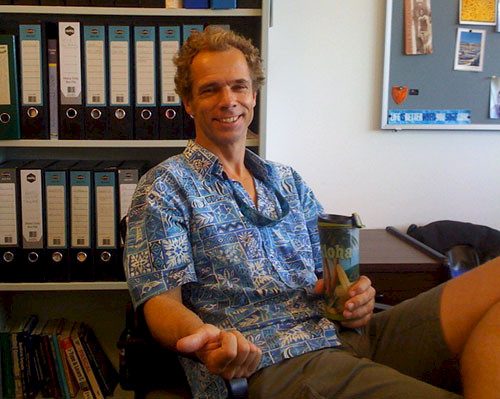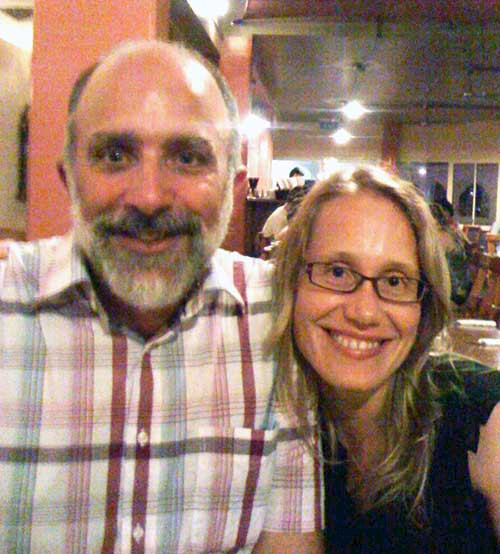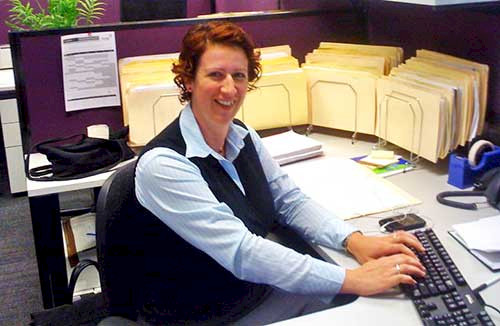Encountering Former Students
Bill Dennison ·On Monday, I went to the University of Queensland to meet with a former student, Dr. Chris Roelfsema and his student Mitch Lyons. Chris and Mitch, who are part of Professor Stuart Phinn's remote sensing group, had worked up a seagrass risk map for Moreton Bay, based on light attenuation from the flood plume, bathymetry and knowledge of seagrass light requirements. Their map showed that most of the Eastern Banks seagrasses were relatively safe, but that western embayments like Deception, Bramble and Waterloo Bays had seagrass that were at risk. These results were supported by the observations I made in a previous blog post on Moreton Bay seagrasses. This risk mapping could be applied to the Great Barrier Reef seagrasses, thus the Moreton Bay example was used to test the approach.

On Tuesday, on a trip to Townsville to develop a strategy for future Great Barrier Reef report cards, I encountered a former University of Queensland student, Dr. Katherine Martin. I had seen her name on emails and knew that she had taken over in the marine monitoring coordination role at the Great Barrier Reef Marine Park Authority from another former student, Dr. David Haynes, who is now a scientist with the South Pacific Regional Environmental Programme. But it wasn't until I walked into the room and saw her face that I made the connection; she was one of the bright young minds that I had in classes and field trips at the University of Queensland, Since Katherine was an undergraduate at UQ, she had lived in Japan, Adelaide and Canberra before landing in Townsville.

I also visited James Cook University to discuss seagrass indicators with Professor Michelle Waycott and computers with Ainsley Calladine, and ran into Dr. Catherine Collier, a former Honours student who studied seagrasses in Moreton Bay, worked with another former student Dr. Eva Abal at Healthy Waterways, and moved to Perth to do her PhD on seagrasses. Catherine has been contributing to climate change analyses and seagrass monitoring that contributes to the Great Barrier Reef report card.
On Wednesday, I flew back to Brisbane and attended a Healthy Waterways Network meeting. Following the meeting, I was able to catch up with Dr. Mara Wolkenhauer, Science Projects Manager at Healthy Waterways. Mara was part of the Marine Botany group, supervised by Dr. Judy O'Neil, as she finished her degree from a German university. She did her PhD at Griffith University before joining Healthy Waterways.

On Thursday, I met with Kate Moore, a former student who is working as a Science Communicator at Hodge Environmental. Kate is pulling together a series of science newsletters about the Southeast Queensland floods. Kate did her Honours at University of Queensland, worked for Healthy Waterways and for Dr. James Udy before setting up her own company.
On Friday, while giving a seminar at Griffith University, I encountered another couple of former students. Professor Stuart Bunn had mentioned at lunch that he had hired a woman named Dr. Liz O'Brien to be the Senior Research Development Officer for his Australian Rivers Institute. The name was familiar, but once again it wasn't until Liz walked into the room that I recognized her from classes and field trips at University of Queensland. After she finished her degree, Liz had worked for state government and helped agencies prioritize research activities. Another former University of Queensland graduate student, Dr. Jon Knight, was at the seminar. Jon did his PhD with my colleague Professor Stuart Phinn, is now working at Griffith University with Professor Pat Dale, continuing to apply remote sensing to study mangroves.
Every day this week, I was able to encounter former students, and actually work with them. These former students all have gained advance degrees and are now employed in projects that are aimed at studying and improving Australian ecosystems. In some cases, they are starting families and in all cases have had interesting experiences in their careers. While my involvement in their careers was fleeting and they had different Honours or PhD advisors and developed their careers while I was at the University of Maryland Center for Environmental Science, it was nonetheless gratifying to revel in their successes. It is also particularly enjoyable to have opportunities to work with them again.
About the author
Bill Dennison

Dr. Bill Dennison is a Professor of Marine Science and Interim President at the University of Maryland Center for Environmental Science (UMCES).
Next Post > International WaterCentre field trip to North Stradbroke Island
Comments
-
Atika 4 months ago
Thank you for sharing this great information with us, i really appreciate your post!